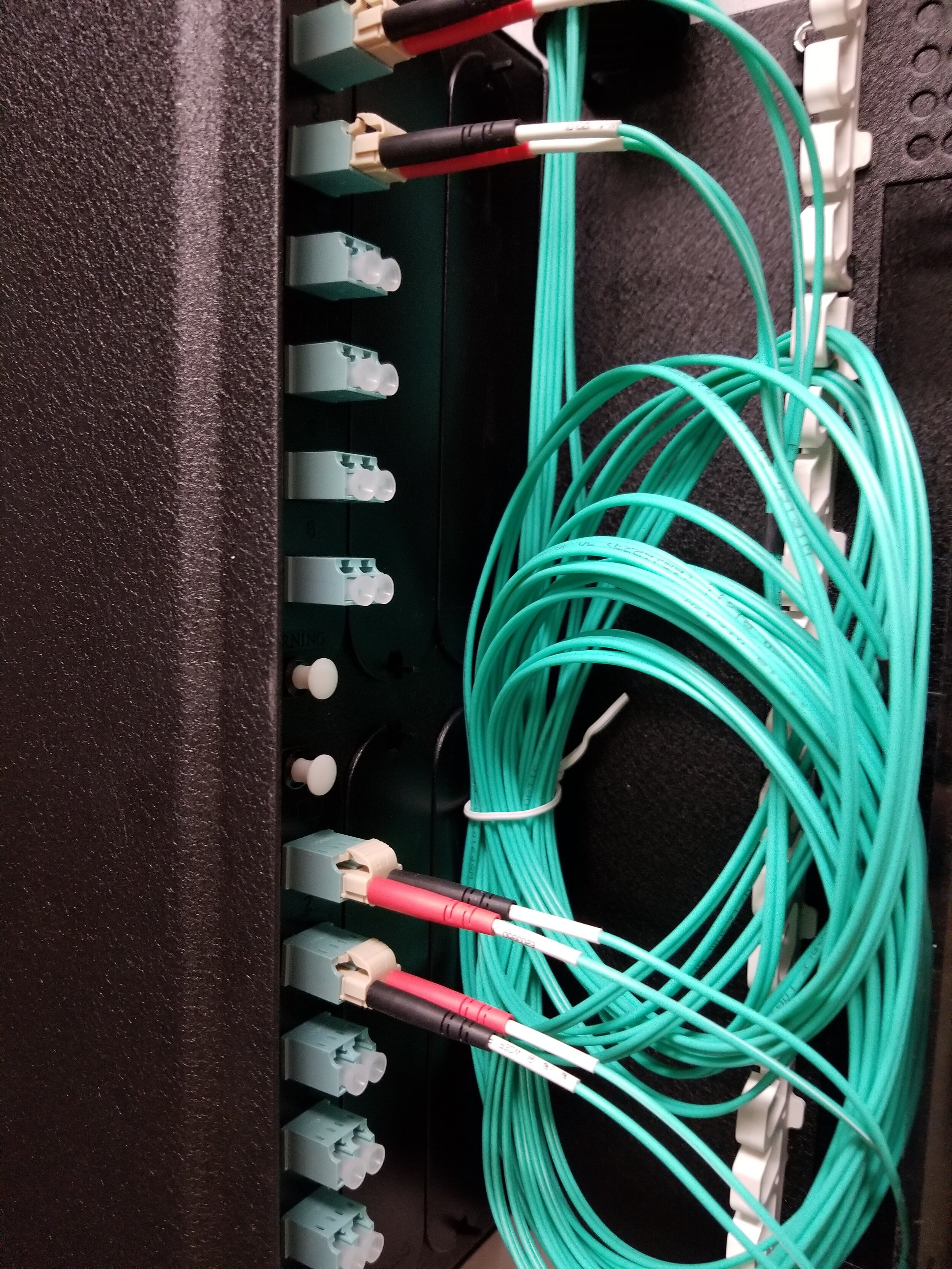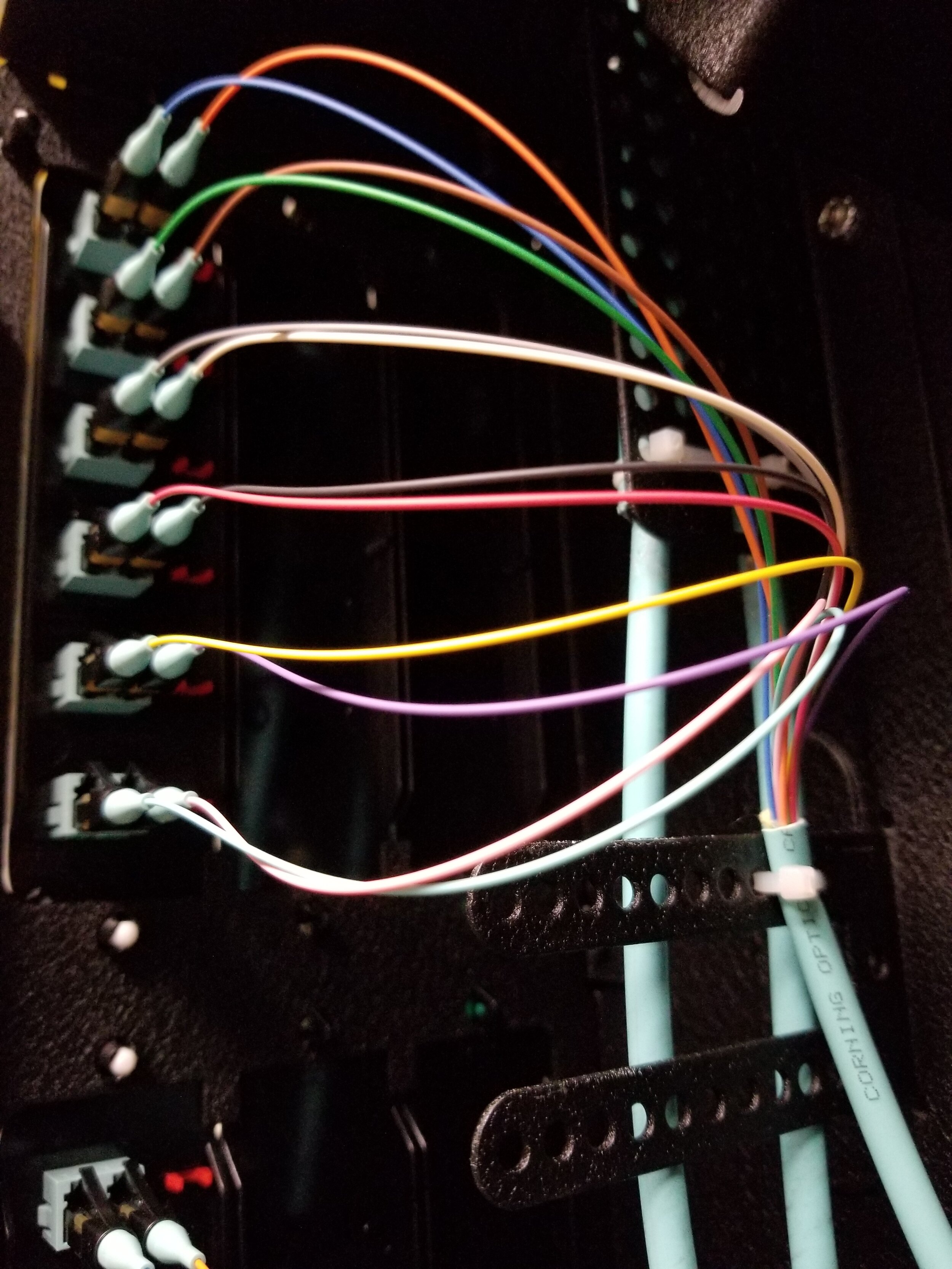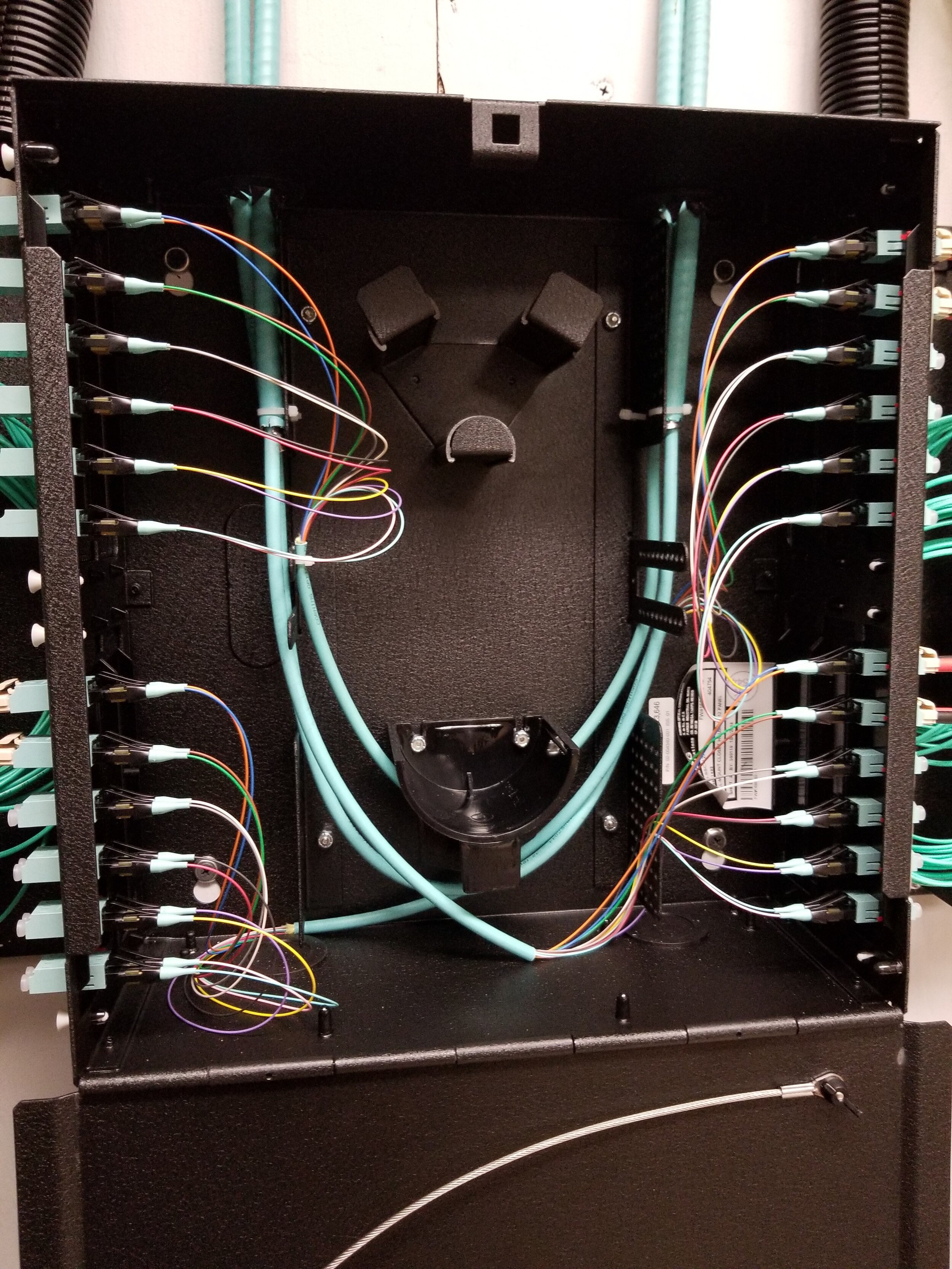Types of Cable
Data (Shielded Twisted Pair):
Twisted Pair data cabling is most commonly used in telephony and computer networking with high electromagnetic interference. The shielded twisted pairs of wires within the protective coating reduce the amount of signal degradation from other power sources. Because of the twist however, all data cabling is limited to 300 feet of signal to avoid data loss.
Data (Unshielded Twisted Pair or UTP):
Less expensive than shielded cabling, UTP has the same build but is not electrically shielded and can be prone to interference in certain environments. The Telecommunication Industry Association and Electronic Industry Association have categorized UTP cabling into eight categories, 1 being the slowest and 8 the fastest.
Category 1: Speed of 1 megabit per second (Mbps) and can only be used for phone lines. Outdated.
Category 2,3,4: Used for phone lines and low-speed networks. Outdated.
Category 5: If only two of the four pairs are used: 100 Mbps (known as 100BaseT Ethernet). If all four pairs are used: 1,000 Mbps (1Gigabit). This is the most common type of cable used in computer networking.
*Note: there are two types of Category 5 cable: Cat5e and Cat5E. Cat5e is outdated and can’t transmit as much data as Cat5E and is also slower. This type of cable is still in circulation but would be removed prior to new cabling.
Category 6/6A: Cat 6 is the most commonly used type of copper data cable. It can support speeds up to 5 Gb per second. Cat 6A or Category 6 Advanced cable can support up to 10 Gb per second.
Category 7: Cat 7 is not commonly used out side of data center applications. This category of cable can support 10 Gb speeds with a larger Mhz frequency than Cat 6A. Cat 7 is limited to a 100’ foot or 30 m range making it impractical for most business scenarios.
Category 8: Cat 8 cable can support insane speeds in the range of 35-40 Gb per second. With a 2000 Mhz frequency it is the fastest copper data cable on the market. Unfortunately just like Cat 7 this cable is limited to a 100’ foot or 30 m distance.
Coax:
Used for television communication, but can also be used for data transmission.
HDMI (High-Definition Multimedia Interface):
Audio/Video transmitting cable used mainly in conference settings where a computer would need to project to the TV.
Fiber Optic Cabling:
Fastest among data cabling, Fiber can span farther distances without radio interference or data loss, providing a stronger connection. Made with glass, this cable is very fragile and requires specific hardware to set up and run. The two types of fiber optic cable are single mode and multimode. Single mode can carry a data signal up to 40 km, while multimode can carry multiple signals up to 2 km.










